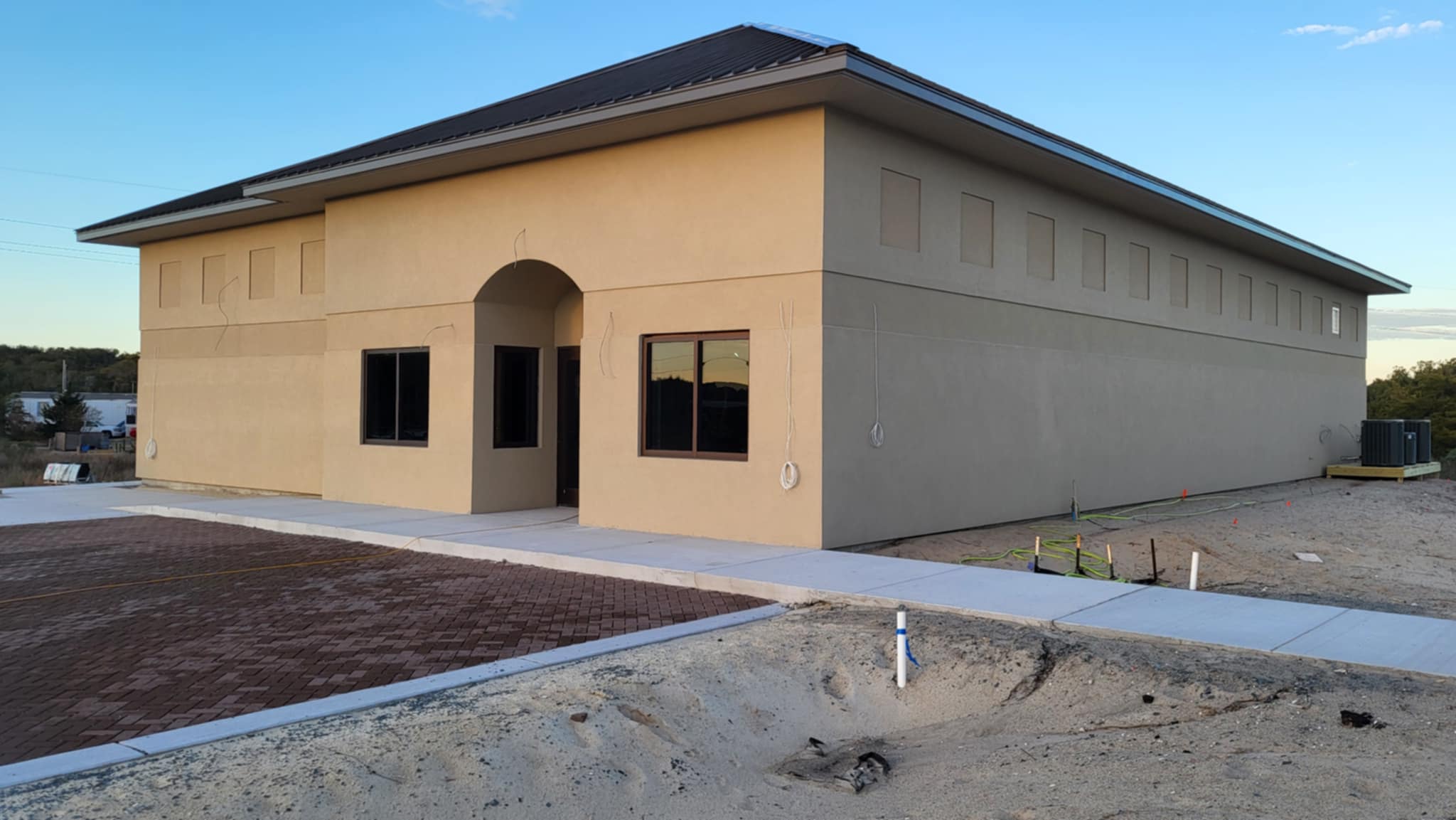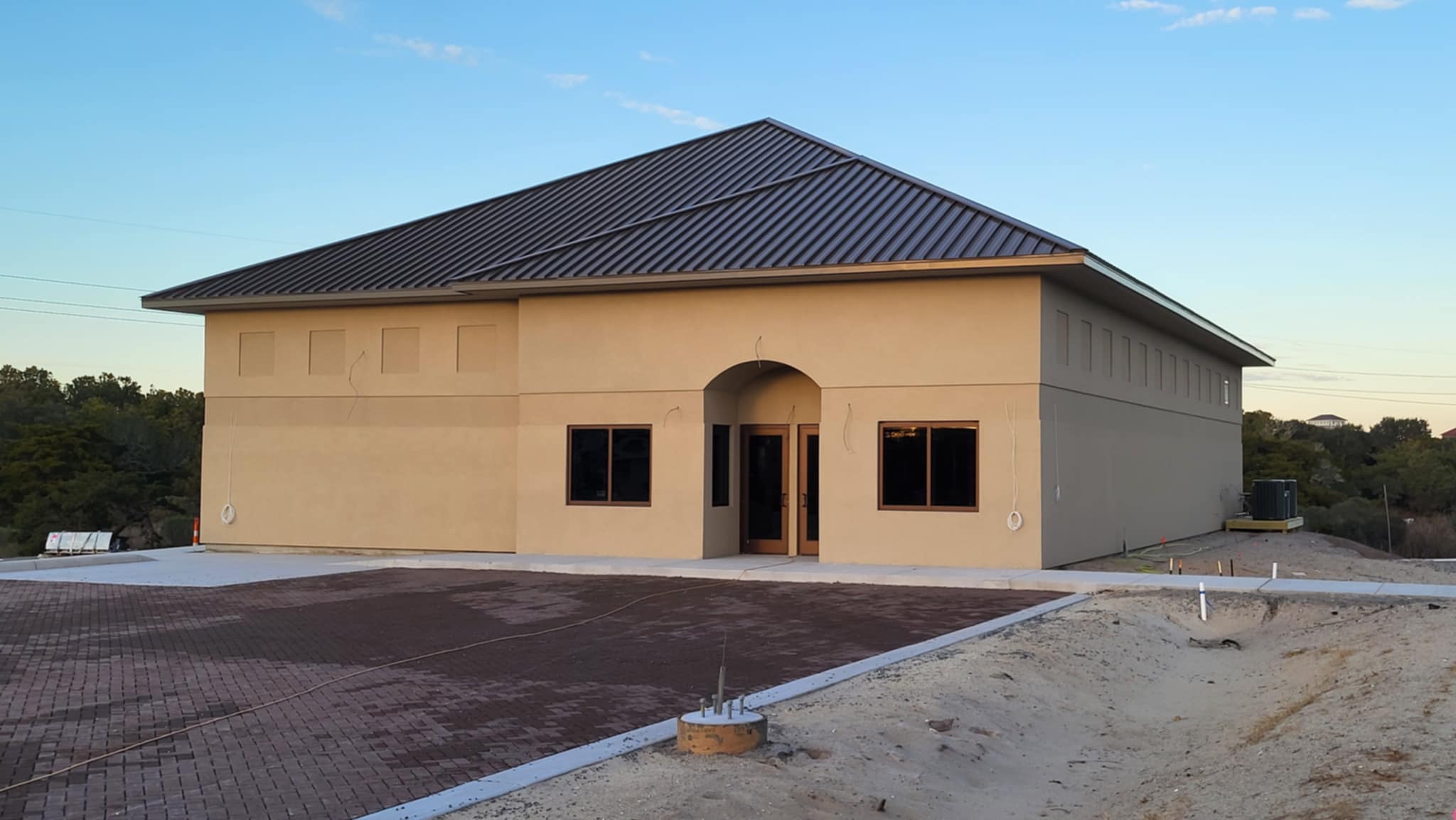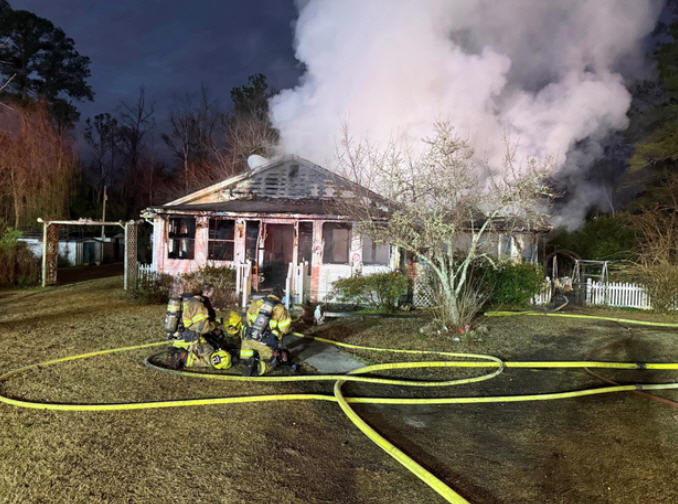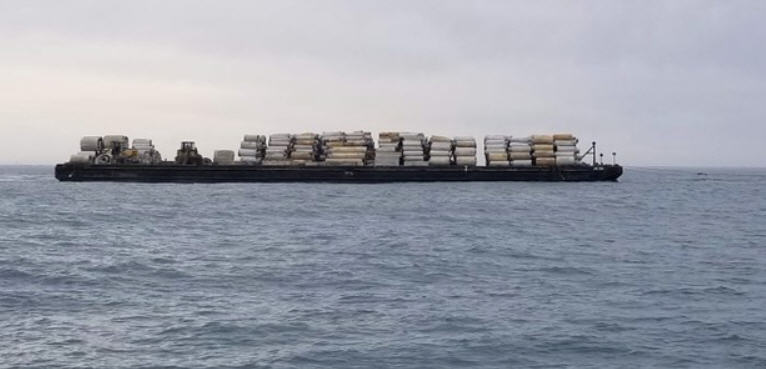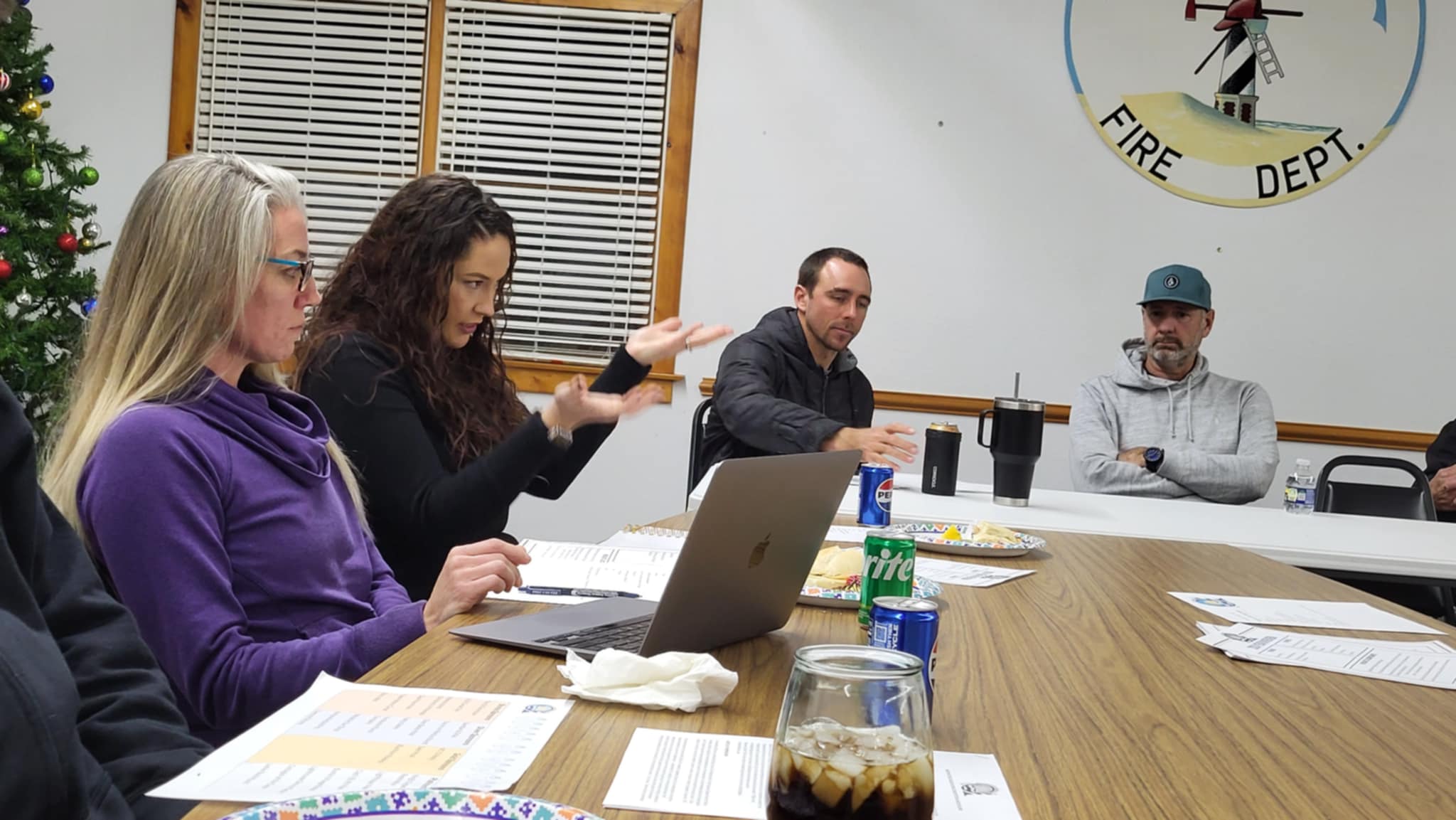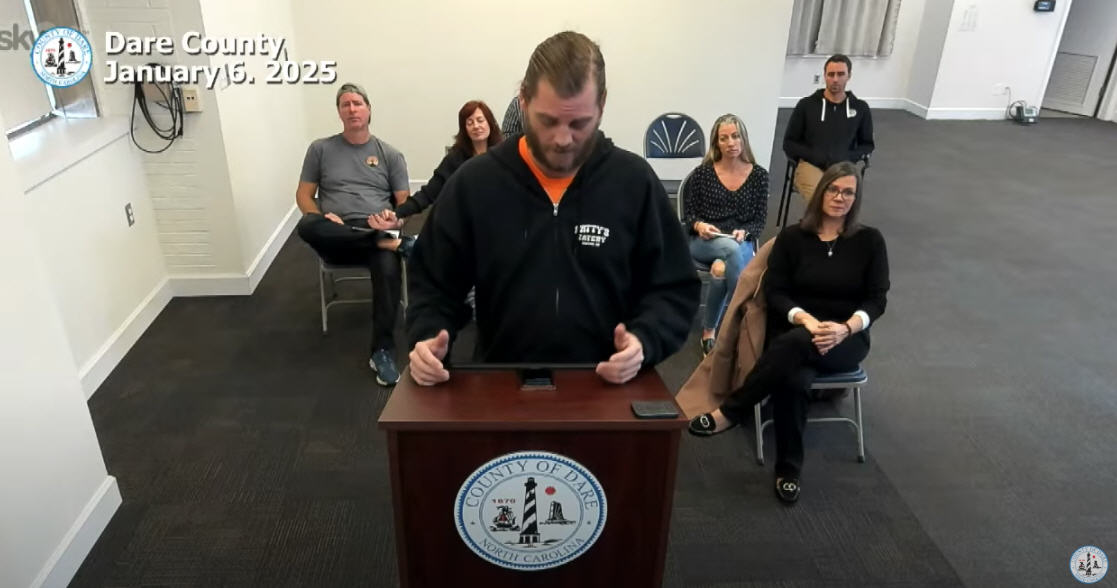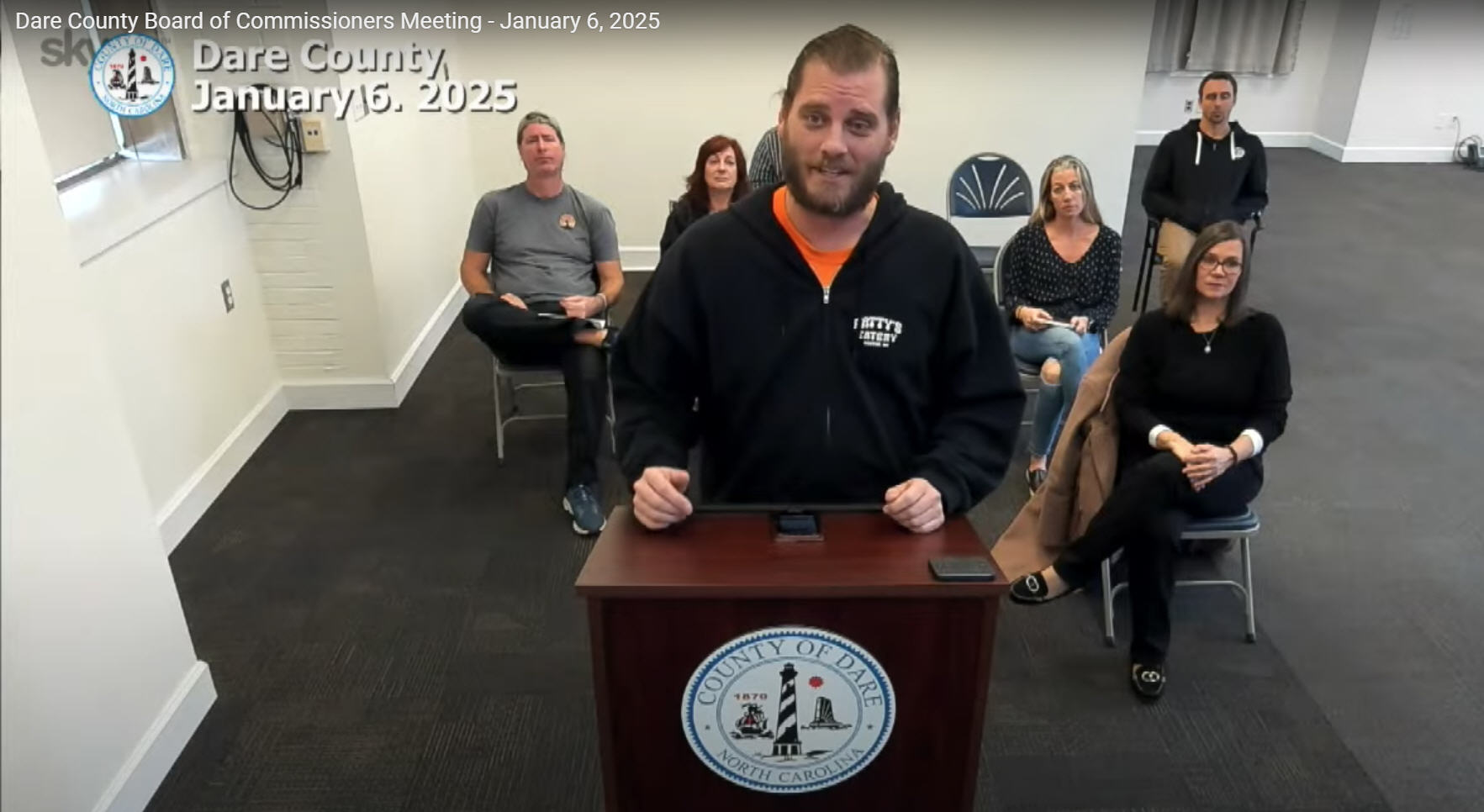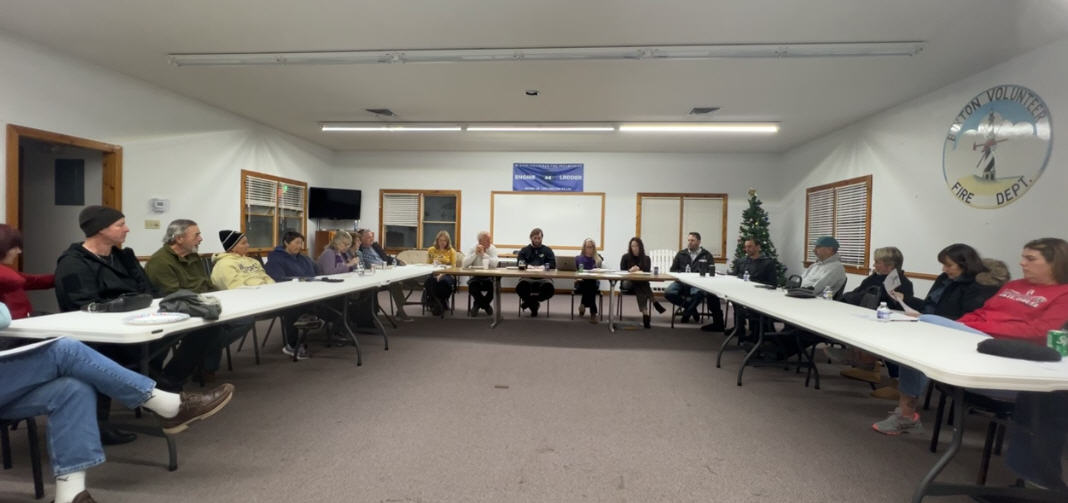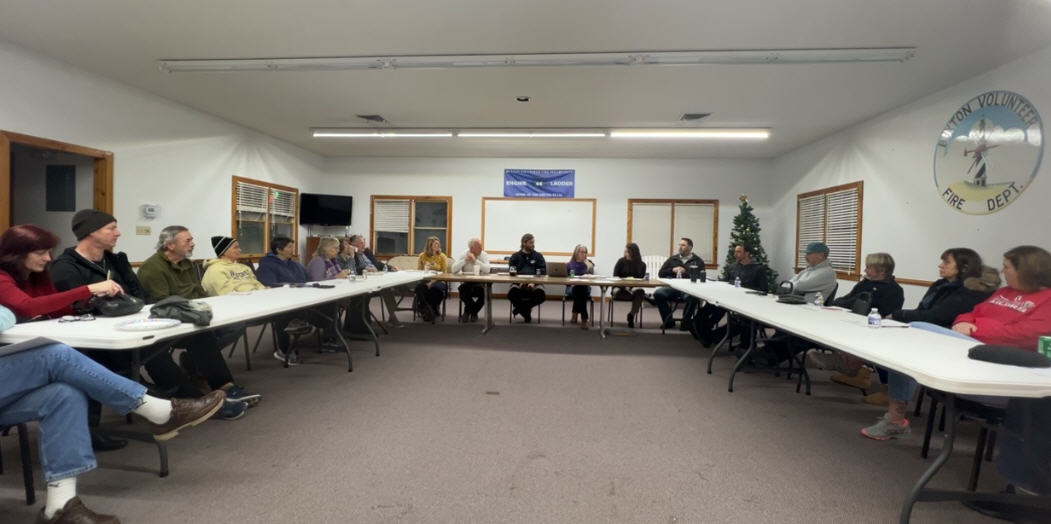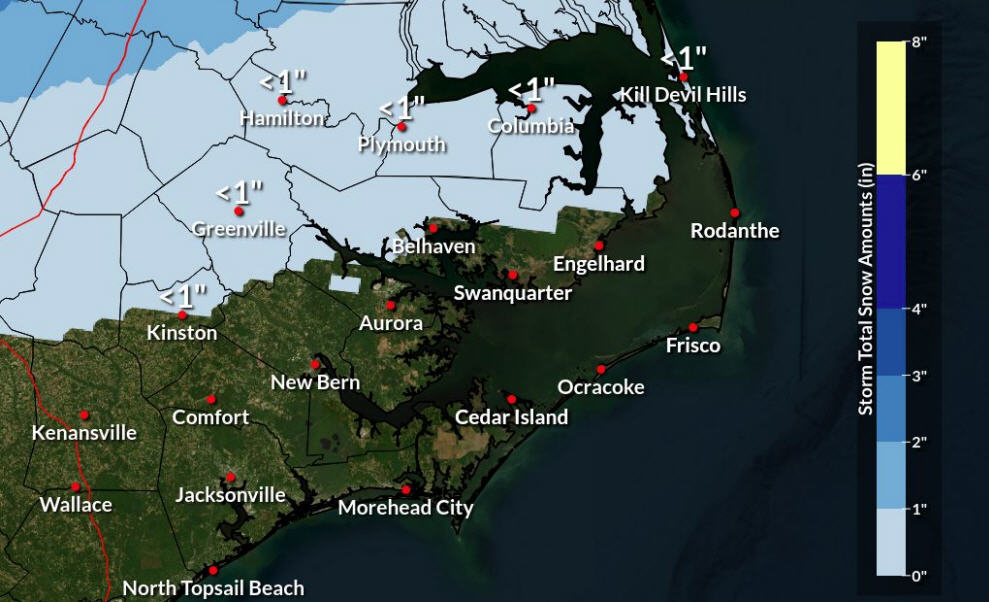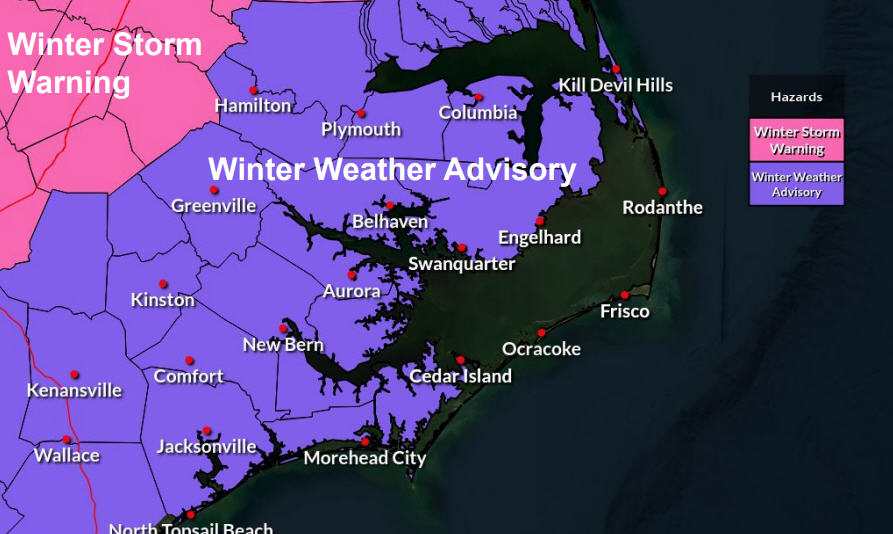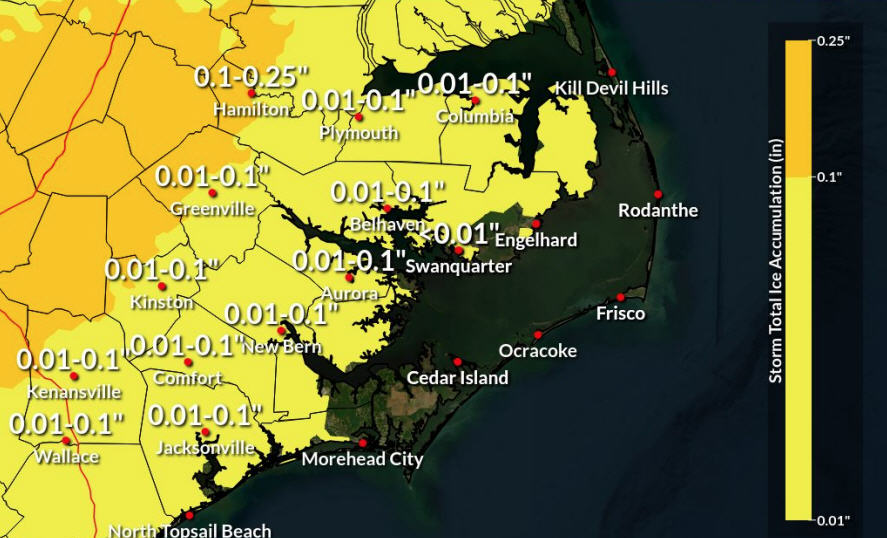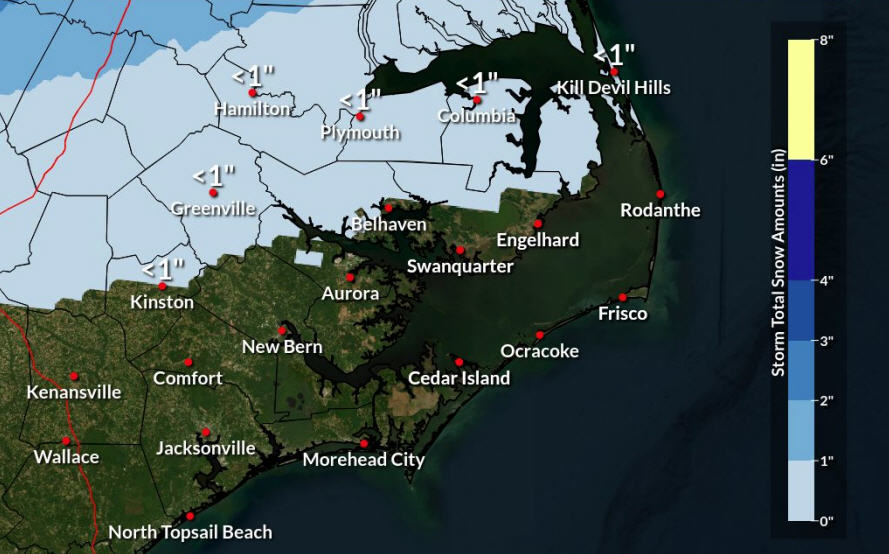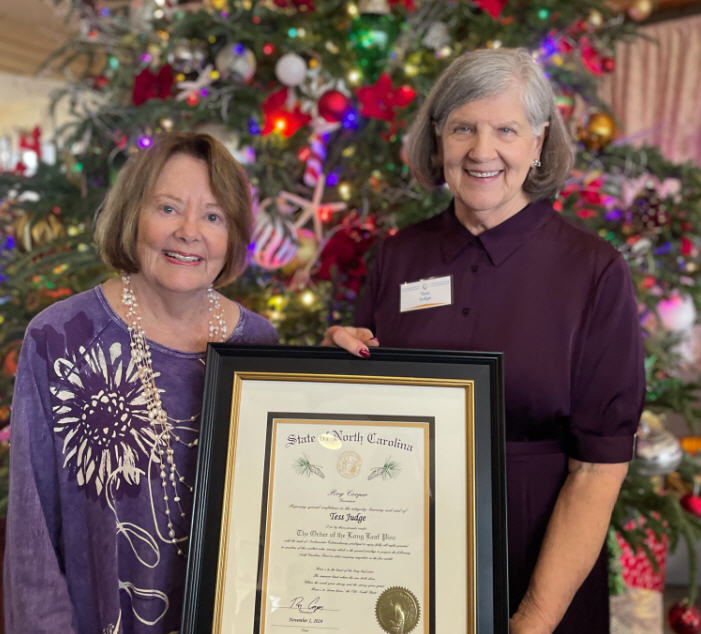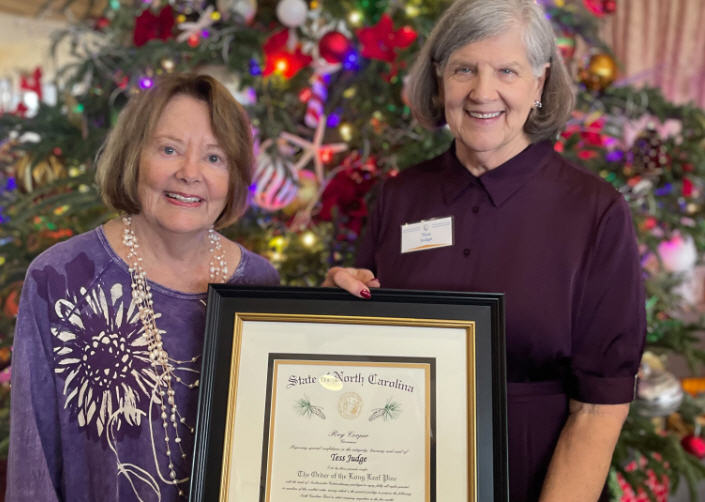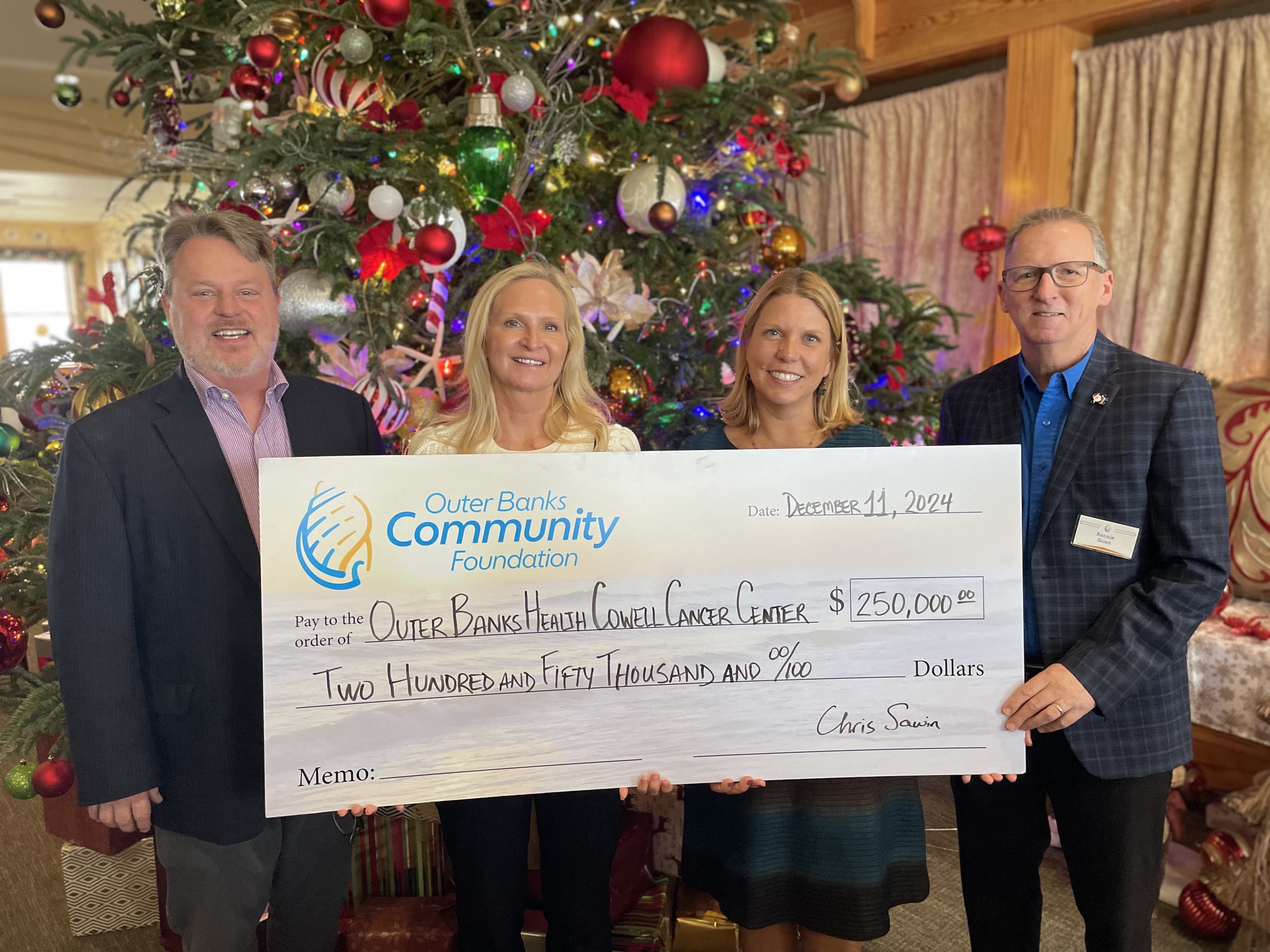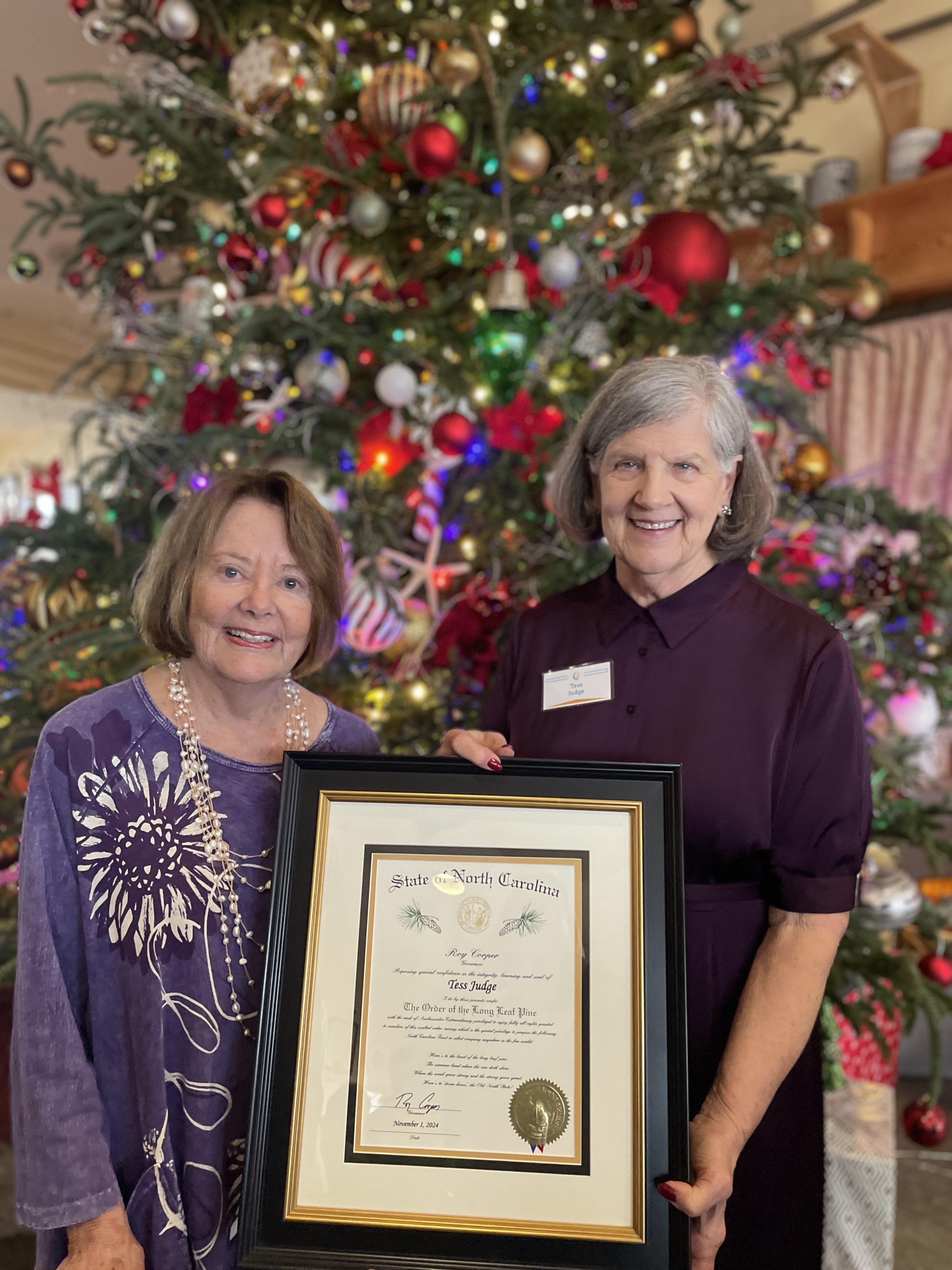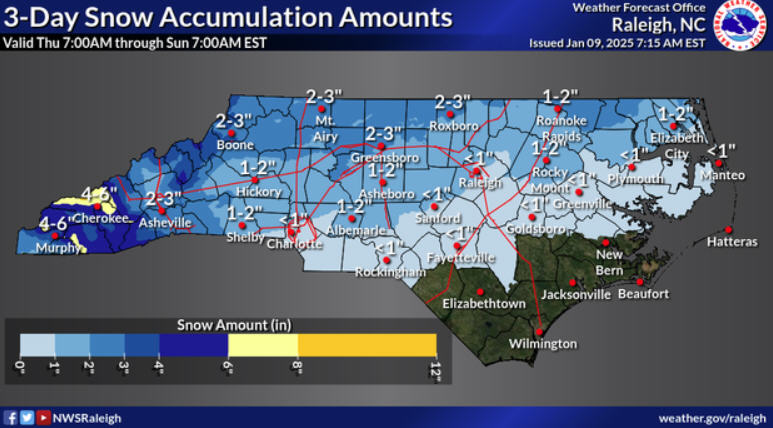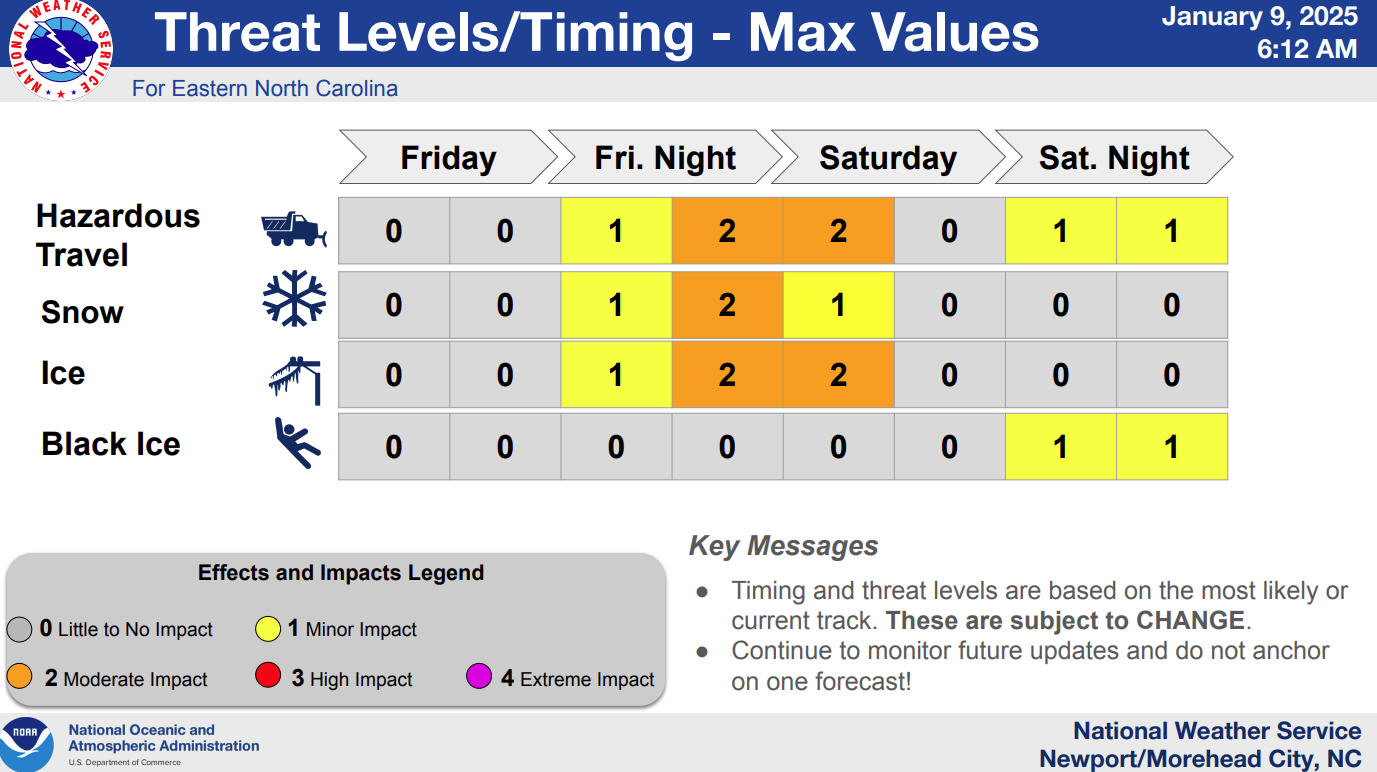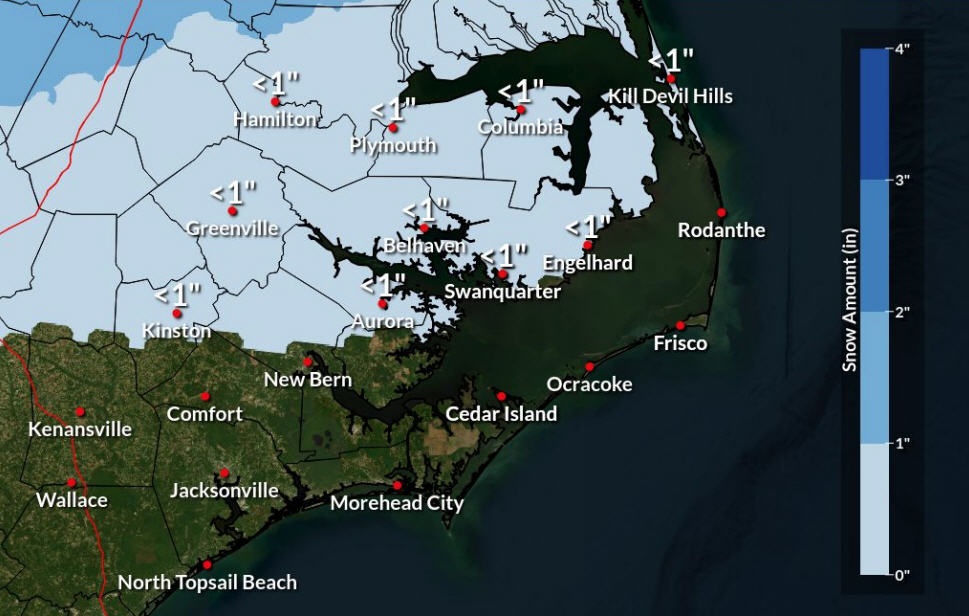More emergency dredging in Hatteras Inlet to begin soon
By JOY CRIST
The emergency dredging of Hatteras Inlet was the prime topic of discussion at the Oregon Inlet and Waterways Commission meeting on Monday, June 13. The imminent project has been fast-tracked by the North Carolina Department of Transportation and other agencies involved and is scheduled to begin within a week.
The meeting was at the Fessenden Center in Buxton and was sparsely attended. Roughly 10 people were present, which included a half dozen representatives from the United States Coast Guard. Waterways Commission board members Steve Coulter, David May, Ernie Foster, Danny Couch presided over the meeting.
The first portion of the meeting covered the recent surveys of Oregon and Hatteras inlets, and then the topic shifted to the emergency dredging of what has become known as the Connecting Channel in Hatteras Inlet, which is scheduled to start very soon. The channel connects the ferry channel near South Docks on Ocracoke with the Inlet Gorge, which is the route mariners take into the ocean.
The shoaling of the channel has become a massive problem for charter boats, recreational mariners, ferries, and commercial fishermen heading from the Hatteras docks into the Atlantic Ocean and back. Several boats have run aground in the past week alone, and many vessels bump the bottom when going through and / or have to coordinate all trips with the tide table.
Jed Dixon, the deputy director for the Ferry Division of the NCDOT, explained the upcoming schedule for the emergency dredging, as well as the steps that were taken to get the ball rolling on the project.
At the June 6 meeting of the Dare County Board of Commissioners meeting, four Hatteras islanders spoke publicly about how the shoaling of the inlet was drastically affecting their businesses. The board voted unanimously to approve up to $150,000 from the county’s inlet management fund to help pay for the NCDOT emergency dredging project. The amount will be matched by the state’s inlet and waterways fund — with the county paying one-fourth and the state paying three-fourths.
After this initial funding approval, explained Dixon, the pieces required for the NCDOT to start dredging came together very quickly.
All federal and state permits have been applied for and should be completed by the end of the week. Dixon said that the state Department of Environmental Quality is working to coordinate all of their respective permits or reviews in order to provide the most expeditious turnaround possible, as is the U.S. Army Corps of Engineers and the National Park Service.
He also noted that the NPS Superintendent for the Outer Banks Group, David E. Hallac, was extremely helpful in expediting the process.
“Our Park Superintendent has been a very good ally,” said Dixon at the meeting. “Our spoil site was almost shut down because of an oystercatcher… but [Hallac] quickly got it opened back up.
“The next time you see him, thank him.”
Once the permits are in place, the Ferry Division marine maintenance crew will begin putting the dredge pipe together and placing it in position, which is scheduled to occur June 17 – 19. The marine maintenance personnel will already be in the area performing a repair to the ramp and gantry at Silver Lake, so the crew can immediately be mobilized to Hatteras Inlet once the permits are in hand. The excavator arrived on site earlier this week, and the dredge pipe has already been delivered to South Dock.
On June 20, the marine maintenance crew will begin dredging. The operation should take about four weeks depending on weather and the tides. The “old” dredge, the Carolina, is on-site and will be used to begin operations. It is the same dredge that was used for the emergency dredging last winter, and roughly the same area will be covered.
The Connecting Channel continues to have troublesome shoaling on both its western and eastern ends.
NCDOT will dredge the western shoal in its entirety, but will be unable to fully address the eastern shoal, as it is not possible to place the dredge in the gorge or inlet because it’s unsafe for equipment, and more importantly, personnel. However, the hope is that the dredging of the western shoal will assist the eastern spot in being flushed out by the existing water flow.
Dixon also noted that trainers and the Ferry Division’s new dredge, the Manteo, are scheduled to come up from Louisiana within the next few weeks. If this occurs while dredging is in process, the new dredge will be used, which may noticeably cut down the overall project time. If the trainers and new dredge do not arrive in time, then the old dredge Carolina will be utilized for the entire project.
Dixon stated that the speed at which the project is progressing was impressive, and was because all agencies involved recognize the urgency of the situation.
“Sometimes there can be a lot of red tape, but we’ve had good coordination so far,” he said.
He also made it abundantly clear that the upcoming dredging was just a short-term fix, and could not be regularly repeated. “We were told very bluntly that there needs to be a plan. Every dredge can’t be an emergency dredge.”
Chief Jason Burke of the U.S. Coast Guard also brought up the issue of coordinating the placement of buoys during the dredging process. The buoys have become a safety concern, as currently they do not properly mark the channels, and they need to be moved off the shoals.
Burke noted, however, that the looming question is determining where, in fact, the buoys should go.
“If the Carolina shows up, and the weather is good, we can get Smilax [a Coast Guard cutter] out there and get the buoys out,” said Burke. “But where do we put them? That’s the elephant in the room.”
The commission members said that they would coordinate with the USCG to help identify where the buoys should go, possibly by having local watermen ride along or assist the cutter with determining the buoy placement.
“We can be proactive – We’ll do whatever we can,” said board member Danny Couch.
Burke and the commission members appeared optimistic that a coordinated effort to adjust and place the buoys could work if the conditions were right.
“Give us weather and water to get out, and tell us ‘This is the best water and this is where the buoys should go’, and we’ll get out there,” said Burke. “And if we need to come back in three months and do it again, we will.”
The commission was also optimistic that the upcoming emergency dredging would relieve the immediate shoaling issues, at least for the next few months. “If [the dredging] works as it did in the winter, it could hopefully last us the rest of the summer,” said board member Steve “Creature” Coulter, a charter boat captain.
Once emergency dredging was covered, the board moved on to discuss long-term solutions and progress made towards securing permits and funding.
Danny Couch noted that steps were being taken on creating an economic impact study that would outline how devastating the inlet issues are to the local economy.
“We’ve getting our ducks in a row to prove what impact it has on the islands and the county,” he said. “…The results of this economic impact study will be eye-opening.”
The commission members agreed that not having access was detrimental to the local economy in a myriad of obvious and not-so-obvious ways.
“Twenty boats did not come to Hatteras village [during the Big Rock Blue Marlin Tournament] because of this,” said Coulter.
“The word gets out [among mariners] ‘Don’t come to Hatteras,’” agreed David May, “and that does a lot of damage.”
In addition to the upcoming economic impact study, the commission also discussed potential spoil sites for a future long-term project.
“If everything breaks open financially, and we can put in a pipeline dredge, where do we put the material?” asked Roger Bullock, chief of navigation for the U.S. Army Corps of Engineers Wilmington District.
“We’ve had the best relationship ever with the National Park Service, so we could reach out to them,” suggested Couch.
The meeting concluded with relief over the short-term solution, and agreement to continue working on the long-term plan.
“There are lots of hard questions and no good answers,” said Chief Jason Burke, “But you’ve made a lot of progress in four years.”
The next Oregon Inlet and Waterways Commission meeting will be July 11 in the Dare County Admin Building in Manteo. The next Hatteras Island meeting will be Aug. 8 at the Fessenden Center in Buxton. Both meetings start at 7 p.m.




